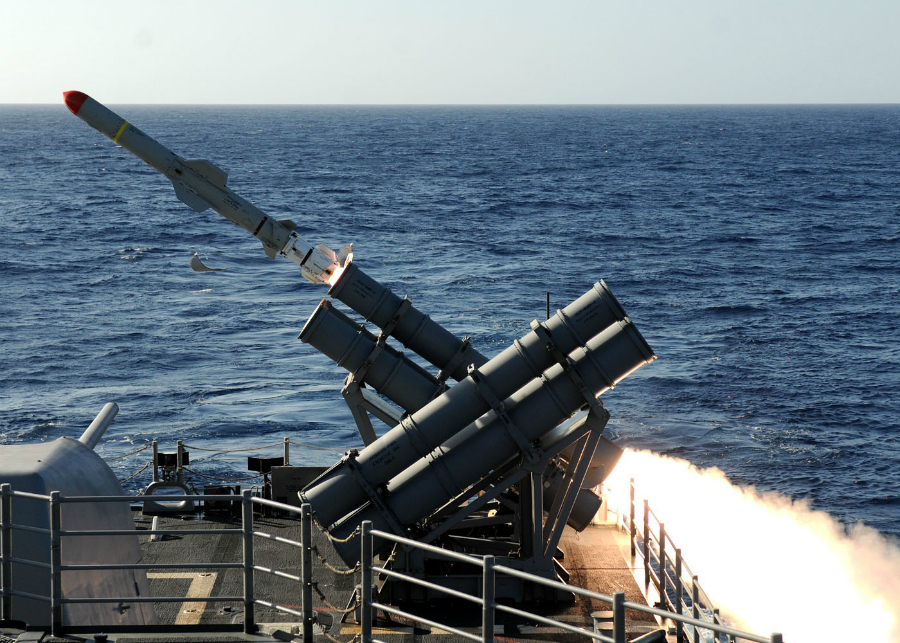The U.S. Navy has recently announced the testing of its electromagnetic railgun for long-range use. The project, aptly named “Star Wars tech” by researchers, uses kinetic and laser energies. This eliminates the need for traditional controlled explosives, thereby mitigating the risk posed by ships carrying explosives that may detonate on board, the Navy explained.
According to the Office of Naval Research (ONR), the railgun works by storing enough electricity in a pulsed power system before sending a signal to the gun, which then generates an electromagnetic force that propels the rounds at extremely high speeds. The railgun was able to generate electromagnetic force that can accelerate projectile up to Mach 7, which is about six times the speed of sound. This equates to projectiles being fired at 4,500 mph. The ONR’s electromagnetic railgun was able to hit targets 110 miles away, the researchers said.
The electromagnetic railgun was designed to help Navy officers in various missions such as ship-to-ship strike, land strikes and naval vessel defense as well as surface warfare and fire support.
The testing was conducted at Dahlgren naval facility’s new Terminal Range in Virginia. The U.S. Navy has been developing the project with BAE Systems since 2005.
“The railgun is a true warfighter game changer. Wide-area coverage and exceptionally quick response will extend the reach and lethality of ships armed with this technology. A future weapon system at this energy level would be capable of launching a 100+ nautical mile projectile,” the ONR announced.
Pentagon lauds project; extends use to Army Howitzer
Pentagon officials have lauded the results of the test, prompting the Department of Defense to announce that the project was being expanded to determine ways on how the current breakthrough could be incorporated to other platforms in order to boost military deployment options. One of these options was to mount the electromagnetic railgun to Army Howitzers.
Researchers inferred that mounting the railgun to a Howitzer would further increase the weapon’s combat scope, which may include high-value targets such as enemy facilities, weapons systems, and vehicle bunkers as well as force concentrations and aircraft and drones. Firing the railgun from an Army Howitzer may also help intercept incoming projectiles and artillery rounds, researchers said.
The U.S. Navy has cited various scenarios where Howitzer-mounted railguns could be deployed such as joint high-speed vessels, destroyers and cruisers within the fleet. Navy officials said the weapon can be used to effectively eliminate targets beyond the horizon at a much faster rate than existing long-range weapons.
However, the Pentagon has not announced when the weapon will be available for deployment by any branch of the U.S. military.
Similar weapon announced testing in 2016
San Diego-based General Atomics Electromagnetic Systems used a similar technology for its own railgun called Blitzer. The Blitzer railgun was also able to release projectiles at Mach 6 speeds during a test conducted last year.
In actual military practice, these weapons could fire projectiles moving at speeds of 4,500mph, which then causes the air in front of them to reach extremely high temperatures thereby generating a sonic boom that rips through the sound barrier. This effect is crucial in causing maximum damage to targets, said renowned defense analyst Allison Barrie.
According to Barrie, weapons like these could be utilized to hit eradicate targets on land, sea and air with utmost precision. Improved safety appears to be the main advantage of these weapons, as less explosives on board mean significant reductions in costs, Barrie said. “This is so important in terms of maintaining naval dominance and in ensuring the United States has absolute naval, maritime superiority going forward in the future,” Barrie added.
Sources:
DailyMail.co.uk
Scout.com
Mirror.co.uk
SputnikNews.com





















